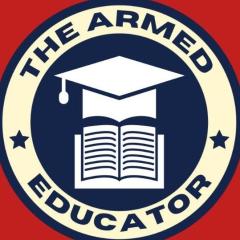-
Posts
150 -
Joined
-
Last visited
-
Days Won
1 -
Feedback
0%
Thearmededucator last won the day on September 8 2024
Thearmededucator had the most liked content!
Profile Information
-
Location
Oakland, TN
-
Gender
Male
-
Occupation
Teacher, Firearms Instructor
Miscellaneous
-
Handgun Carry Permit
Yes
-
Law Enforcement
No
-
Military
No
-
NRA
Yes
-
Carry Weapon #1
Glock 19
-
Carry Weapon #2
M&P Shield Plus
Social Media
-
Website URL
https://thearmededucator.weebly.com/
- Facebook Profile
- Instagram Profile
Recent Profile Visitors
The recent visitors block is disabled and is not being shown to other users.
Thearmededucator's Achievements
Established Contributor (3/5)
211
Reputation
-
For those keeping score at home, here’s a short list of the Sig P320 Incidents: Backpack drop https://youtube.com/shorts/GHMyMVR3CRg?si=4zorAyAP7drmHIz- Appendix carry https://www.youtube.com/watch?v=l58e2XvU6BQ&ab_channel=CarryTrainer Vancouver, WA PD SafeFire holster discharge https://www.instagram.com/p/DKnYZ0zhBSg/?utm_source=ig_web_copy_link Gray Guns (Bruce Gray) parts configuration issue https://www.instagram.com/reel/DKP_3hkz9jN/?igsh=MWlhcjFyZ21veHNsMQ== USMC engineering review recommended https://www.wearethemighty.com/military-news/sig-p320-engineering-review-recommended-in-marine-corps-report/ Montville PD holster discharge during arrest https://youtu.be/3_CYjoK2bqo?si=Ie4WMKwY5fp4Om9T La Grange, TX Police officer holstered; shot in the leg https://cbsaustin.com/news/local/it-happened-again-texas-officer-injured-by-holstered-sig-sauer-p320 Ceres PD SRO holstered; shot in leg at school https://amp.modbee.com/news/local/article309984160.html Unknown training session holster discharge https://youtube.com/shorts/cOUfurKIjnI?si=mxIY8Gt630k-ZQwP Achilles Heel Tactical class holster discharge https://youtube.com/shorts/DClhzMjgiyI?si=kXZO2Muyiw--S1al Garand Thumb experiences uncommanded discharge https://www.facebook.com/story.php?story_fbid=1245671740462693&id=100050596354523 Franklin, TN man holstered discharge https://www.wsmv.com/2025/05/15/nationwide-reports-popular-pistol-firing-without-trigger-pull-uncovered-by-wsmv4-investigates/?utm_source=chatgpt.com# Philadelphia man holster discharge lawsuit https://apnews.com/article/sig-sauer-pistol-discharge-lawsuit-7d6e37035d7205ec9b04c92856964f21# Canadian JTF-2 uncommanded discharge https://www.cbc.ca/news/politics/canadian-forces-handgun-sig-sauer-p320-1.6610477 Fort Eustis Army MP uncommanded discharge https://www.nenc.news/2024-06-25/documents-detail-u-s-soldiers-shot-by-their-own-sig-sauer-guns-military-says-no-reason-for-concern?utm_source=chatgpt.com USMC Camp Foster Okinawa discharge https://www.wearethemighty.com/military-news/sig-p320-engineering-review-recommended-in-marine-corps-report/ Washington Police Academy recruit discharge https://www.police1.com/firearms-training/wash-police-academy-bans-sig-sauer-after-unintended-discharge-incident?utm_source=chatgpt.com# Washington Police Academy bans P320 https://www.police1.com/firearms-training/wash-police-academy-bans-sig-sauer-after-unintended-discharge-incident Oregon Police Academy bans P320 https://www.youtube.com/watch?v=_vE3Em-bvYo Milwaukee PD bans P320 https://www.thetrace.org/2025/05/sig-sauer-p320-police-resale-public/ Dallas PD bans P320 https://www.nhpr.org/nh-news/2017-08-07/dallas-police-suspend-use-of-pistol-manufactured-by-n-h-based-sig-sauer Chicago PD ban the P320 news article https://morninganswerchicago.com/chicago-police-officers-barred-from-carrying-popular-sidearm-amid-safety-concerns/ Several agencies ban P320 https://stateline.org/2025/03/10/more-law-enforcement-agencies-reconsider-use-of-popular-sig-sauer-p320-handgun/
-

Used shield 9mm or new shield plus 9mm
Thearmededucator replied to Countrysinner's topic in Handguns
I sold my Shield for a Shield Plus with no regrets -
If your physical liabilities are forcing you to stop carrying IWB, it makes very little sense to move the gun to the furthest extremity on your body. Instead I would recommend looking into appendix carry, particularly with a PHLster Enigma, which is a great option in shorts (I was able to wear mine at the spray park with the kids without a shirt)
-
Don’t get me wrong, a Taurus is adequate, but honestly, as I am reading it, I think your mindset on it is a bit messed up. You are naturally correct in focusing on carry gun before the (presumably more expensive) fun gun in a couple of months. But the carry gun is life saving equipment, and therefore not something to skimp on. Especially when significantly better arms to be had for minimal price differences. On this forum you can often see well cared for Glocks (for example) go $400 or less. Additionally (and this part often gets overlooked) all the other equipment like spare parts, magazines, and (especially) holsters are ubiquitous. I recommend people build these costs into the initial investment for the best return. Lastly, have you shot numerous models, to include the Taurus, for firsthand experience? Online opinions (mine included) mean Jack squat in the face of personal experience.
-

Hearing protection
Thearmededucator replied to Square Wheels's topic in Firearms Gear and Accessories
Outside makes a big difference. The in-ear foamies are the best rated. I use AXIL XCOR for most of my shooting. -
The same things as always. We just hear about them all now
-
Extra props to the deacon who deployed his concealed F150
-
What do you know? If you prevent entry by force, you also prevent casualties
-
I appreciate a cast iron skillet, but I just use a couple of lodges
-
Firing pin and grip safeties are great ideas for Sig
-
I’d never seen that quote before, and have now seen it twice in one day. the world is strange
-
If you like this, read Varg Freeborn’s books “Violence of Mind” and “Beyond OODA”
-
“When Violence is the Answer” by Tim Larkin
-

Rifles like the AR with the mechanical style of an AK
Thearmededucator replied to Jon-Lloyd's topic in Long Guns
The IWI Galil seems to fit what you are looking for. M1A and FAL https://primaryweapons.com/ar-series/ also use long stroke piston systems.





